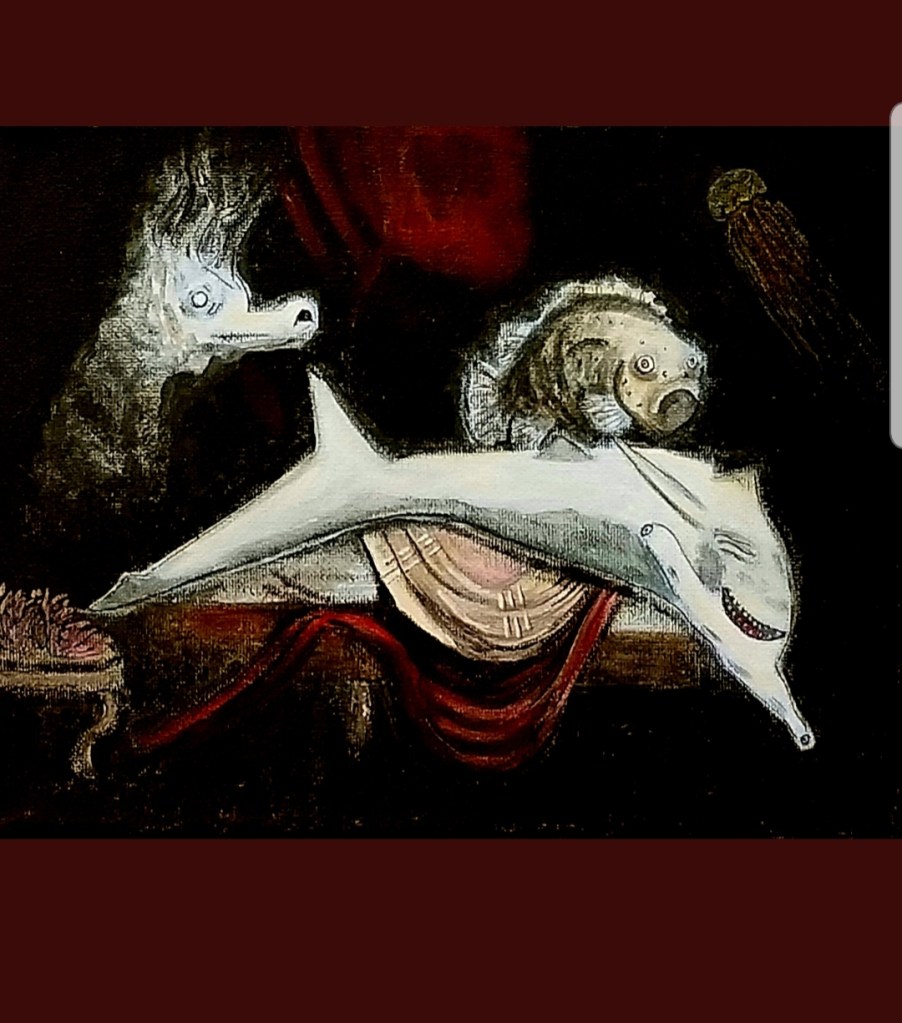Welcome back, readers, to another recap of the #SundayFishSketch on Twitter. Where you get to experience highlights of the fantastic fish art being regularly posted. Don’t forget, if you are inclined to join in, but aren’t confident in your artistic skills, don’t worry! The #SundaFishSketch community is open, welcoming, and all about practicing art by drawing fish. Also, be sure to look at a previous fisheries blog post on ‘How to Draw Fish,’ for a brief guide to get you started. Continue reading for fun fish facts and beautiful fish art.
#BottomDwellers
Bottom dwelling fish come in many forms. From iconic flatfishes with both eyes on the same side of their head, to the flat anglerfishes or angel sharks that use lures and crypsis to bring in their prey, all the way to the deep-sea tripod fish, with delicate elongated fins. These fishes have evolved many different adaptations to living on the bottom. Our artists went out of their way to illustrate some of the intriguing bottom dwellers of the world.
Alex went with the European plaice, Pleuronectes platessa, a species of flatfish. This group of fishes are iconic for the placement of their eyes. Flatfish lay flat on the bottom, but on the side of their body as opposed to their ventrum, or belly. During development, one eye migrates from one side of the head to the other, so both rest on the side of the body that looks upward. Whether it is the left side or the right side depends on the species.
Calla painted a Piper gurnard, Trigla lyra. Species in Triglidae (sea robins and gurnards) possess armored bodies and the front few fin rays on their pectoral fins are separated and robust. Sea robins use these fin rays to ‘walk’ across the bottom, to detect prey, and are known to possess chemoreceptors.
Jennifer worked on a deep-sea tripod fish. These fish have modified caudal and pelvic fins that they use to ‘stand’ on the sea floor. Some also possess modified pectoral fins that they position forward in the water column that are innervated with nerves.
#StPattysDay
Although it fell on a Wednesday, the #SundayFishSketch still celebrated St. Patrick’s Day by having artists draw a green fish or a fish from Ireland.
Mitch went with a Northern pike, Esox Lucius. These elongate freshwater fish are found in temperate areas of North America, Europe, Asia, and Siberia. They are generally top predators in their habitats and can reach upwards of 50+ lbs.
Grant painted an Arctic char, Salvelinus alpinus, a fish that can be common in areas around North America and other nordic countries, but is considered rare in Ireland. Depending on the population, these fish can either be anadromous, semi-anadromous, or completely land locked.
Sarah rendered a wonderful Flapper skate (Dipturus intermedius), a subspecies of the Common skate. Found in coastal waters around Ireland, this skate isn’t as common as it’s name describes. These fish are thought to reach ages between 50-100 years and is strictly protected within the EU.
#DaylightSavings and Grumpy Fishes
Springing ahead an hour for daylight savings can hit many of us pretty hard. We asked our community of artists to sketch fishes that would likely be grumpy due to losing an hour of their day. This resulted in some truly entertaining renditions.
Olivier sketched a grumpy walleye, Sander vitreus. Walleye are known for having good vision under low-light conditions. Olivier’s choice to draw a fish that may not be too pleased at losing an hour of his dark morning makes sense.
Nilo went nocturnal and sketched a soldier fish (Myripristinae). Many species of soldierfish hang out in caves and under rock ledges during the day and do their feeding at night. Certainly grumpy to lose an hour!
Fabiana painted a Swell shark, Cephaloscyllium ventriosum, known for having a circadian rhythm. These fish are also nocturnal, sleeping the day away in rock crevices. Losing a good hour of night-time hunting would make for a grumpy day.
ARTIST OF THE MONTH
What is it like to participate in the #SundayFishSketch? Just ask our artist of the month, Katie Bjorn (@bufotwist), who creates beautiful fish art across many different medias.

How long have you been participating in the #SundayFishSketch?
I’ve been participating in #SundayFishSketch since January, 2019. Strangely enough, my first wasn’t a fish. I think the challenge was to share a marine creature that was new to you. I picked a strap-toothed whale.
Why did you decide to participate and has it been difficult to sketch on a semi-regular basis?
I decided to participate because of the great positive energy of the group and though I have always lived on or near water I hardly ever drew fish. It has not been too difficult to sketch on a semi-regular basis. I have taken paint, brushes, and a small canvas with me to work, on vacation, and to work conferences. Art helps me wind down from a stressful job at a Florida hospital.
Do you believe your art has improved since joining the hashtag?
I do believe that my art has improved since joining the hashtag as well as my knowledge of fish.
What has been your favorite theme thus far and why?
My favorite theme so far was the team up with the #GettyMuseumChallenge to recreate famous works of art substituting fish. It was fun to see all the different reinterpretations by so many different artists. I also found it challenging to try to recreate pieces I have admired with a fishy theme.

